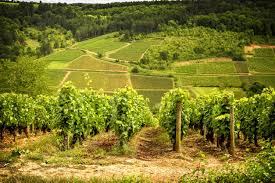Cover crop management

Soil erosion is a natural process significantly accelerated by land use and climate changes and is one of the most important issues that needs to be solved to achieve sustainability in agroecosystems. In the Mediterranean area vineyards are one of the land uses responsible for greater soil losses. The traditional method to cultivate vines, where water is a limiting factor, is on bare, non-cover cropped and tilled soils; in addition, the high mechanization of the different operations leads to transforming land and reorganizing plots. The result are cultivated soils with altered profiles, soil compaction, lower organic matter content, poor structure (decrease in the stability of soil aggregates) and low infiltration capacities: in these conditions, vineyard’s soils are more susceptible to erosion processes, especially in the hilly plots where the vine rows orientation is along highest slopes. The climate changes represent additional threats for soil degradation: with global warming the increase of extremes events (precipitation with higher rainfall intensity) may cause further negative impact with less water storage in the ground (more runoff) and more soil erosion; moreover, higher temperatures accelerate the decomposition processes and therefore the loss of organic matter, with consequent loss of fertility and negative effects on soil moisture availability.
Maintaining a high aggregate stability in soils is essential for minimizing soil erosion and to improve water storage: a good soil structure is the most important characteristic for sustaining agricultural productivity. The aggregation of soil particles can be rapidly increased by adopting the vineyard cover cropping. This method is widely used in European temperate areas (with frequent summer rainfalls) to create an ecological balance and manage the grapevine vegetative vigour, but remains hampered in semi-arid areas (with low summer rainfall and high evaporative demand) because cover crops compete for soil water, leading to higher grapevine water stress and consequently to lower growth and yield.
Cover crop is a living green ground cover (grass cover, either sown or natural) planted between (and sometimes also under) the rows of vines, in order to improve the management of the vineyard and the physical and biological properties of the soil. There are several different cover cropping practices:
- A natural or permanent vegetation cover in the inter-rows with perennial species, typical of temperate climates and fertile soil; the grasses are mulched several times during the vegetation season and no-tillage of the soil is required (only in the under-row strips as an alternative of herbicide control).
- Annually seeded and tilled cover crops (green manure): a post harvest of cover crop seeding (in fall or late summer) with a blend of legumes and herbs; the choice of seed mixture depends on the soil fertility and the degree of competition with the vines desired.
- Non-tillage management with annual cover crop species with reseed species or with annual cover crops that are not self-reseeding (seeding in fall and in spring the cover crop is mowed and left to lie on the soil surface).
In general, cover crops in vineyard:
- protect the soil from erosion;
- increase the organic matter and enhance the soil structure;
- improve the water-holding capacity of the soil and reduce water loss for evapotranspiration;
- improve biodiversity (plant, animals and microbial);
- provide firm footing for the operating machines during wet weather;
- regulate vine growth and can enhance the quality of grapes and wine.
All the managements that implies soil conservation represent a concrete adaptation strategy to climate change, increase resilience and reduce vineyard system vulnerability of some specific area.
REFERENCES:
Amezkeka E (1999) Soil aggregate stability: a review. Journal of Sustainable Agriculture 14, 83-151
Baiamonte, G.; Minacapilli, M.; Novara, A.; Gristina, L. Time scale effects and interactions of rainfall erosivity and cover management factors on vineyard soil loss erosion in the semi-arid area of southern Sicily. Water 2019, 11, 978
Medrano, H., Tomás, M., Martorell, S., Escalona, J.M., Pou, A., Fuentes, S., Bota, J., 2014. Improving water use efficiency of vineyards in semi-arid regions. A review. Agron. Sust. Dev., 1–19
Novara, A.; Catania, V.; Tolone, M.; Gristina, L.; Laudicina, V.A.; Quatrini, P. Cover crop impact on soil organic carbon, nitrogen dynamics and microbial diversity in a Mediterranean semiarid vineyard. Sustainability 2020, 12, 3256
Ramos, M.C., 2016. Soil losses in rainfed Mediterranean vineyards under climate change scenarios. The effects of drainage terraces. Agriculture, vol. 1, 124–143. http://dx.doi.org/10.3934/agrfood.2016.2.124.
Rodrigo-Comino, J. Five decades of soil erosion research in “terroir”. The State-of-the-Art. Earth-Sci. Rev. 2018, 179, 436–447
Pou A, Gulías J, Moreno MM, Tomás M, Medrano H, Cifre J (2011) Cover cropping in” Vitis vinifera” L. cv. Manto negro vineyards under Mediterranean conditions: effects on plant vigour, yield and grape quality. J Int Sci Vigne Vin 45:223–234
Relations
- Network
- List
- Geolocation
- More
ADAPTING VITICULTURE TO CLIMATE CHANGE GUIDANCE MANUAL TO SUPPORT WINEGROWERS’ DECISION-MAKING (2016)
This manual focus on the adjustment of viticultural management practices and decisionmaking in response to climate change at the vineyard level. It has been developed on the basis of scientific research and many field observations.

